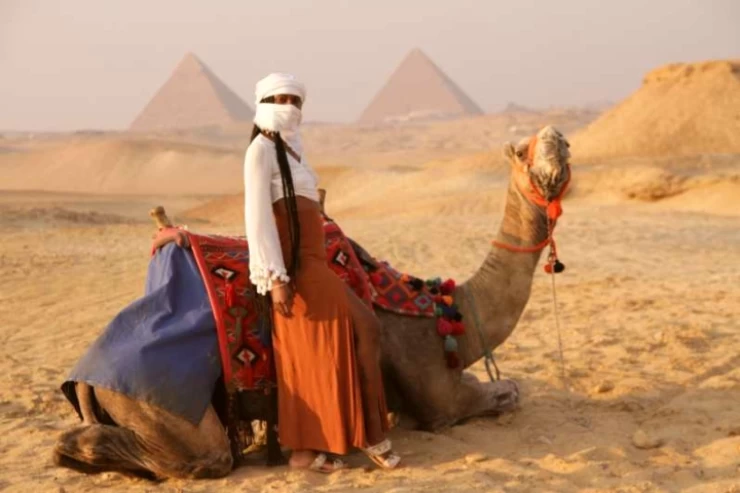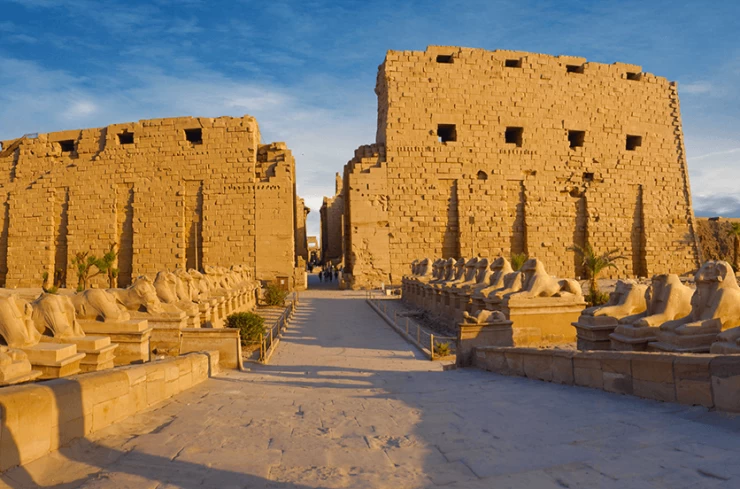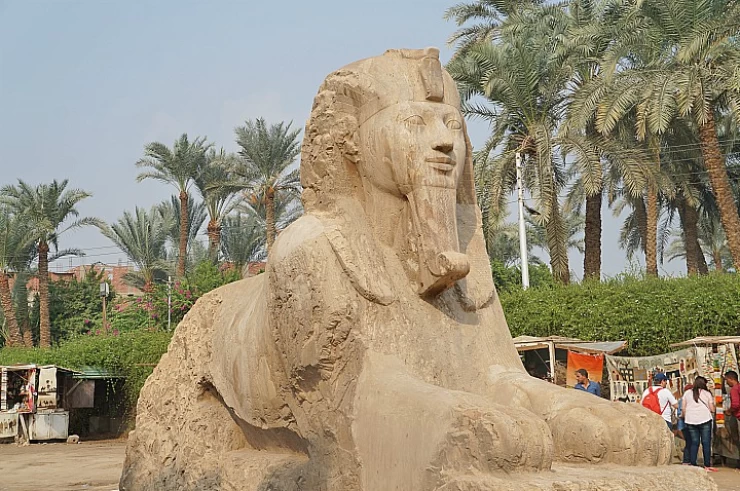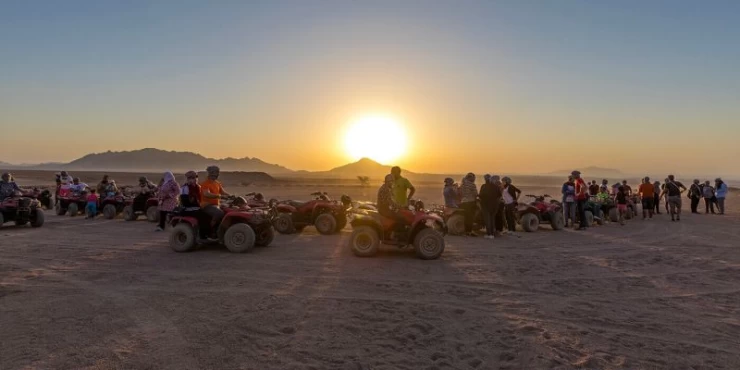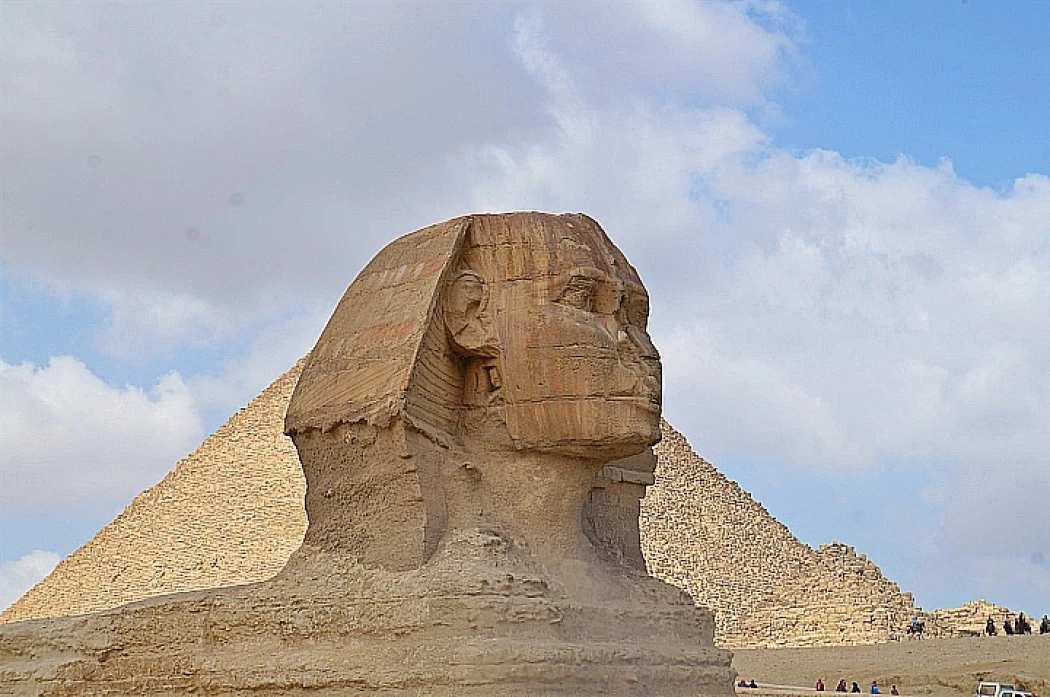
The great sphinx of Giza
The Great Sphinx of Giza: Guardian of Ancient Mysteries
The Great Sphinx of Giza has become an important and unique symbol of the ancient world. The statute, found on the Giza Plateau in Egypt, has been fascinating for hundreds of years to historians, archaeologists and travelers because it has a lion’s body and a human’s head. Many scholars are still interested in the Sphinx, wondering about its creation, reason for being, and the meaning of its design.
Origins and Construction
It is thought that the Great Sphinx was created around 2500 BCE, during the time that Pharaoh Khafre (also called Chephren) built his pyramid in the Fourth Dynasty. Most of the dating for the Sphinx is based on being close to the Pyramid of Khafre and the likeness between the Sphinx’s face and those of the pharaoh’s statues. Alternative theories say the water erosion on the statue means it could be much older than formerly thought and might date back 7000 years, as there was heavier rainfall in that period.
From a big outcrop of limestone, the Sphinx was created and is around 73 meters (240 feet) long, 19 meters (62 feet) wide, and 20 meters (66 feet) high. The stone for the body came straight from the bedrock, and several other blocks have been added during both ancient and modern restorations.
Many think that the Sphinx’s head is a royal portrait, and it may even be that of Khafre. The person’s head is covered in a nemes headpiece, the royal symbol of pharaohs from back then, but it once included a ceremonial beard and a nose that has worn away over time. Both the British Museum and the Egyptian Museum in Cairo contain the beard fragments. A lot of stories have developed about the nose, suggesting it was deliberately removed sometime between the 10th and 15th centuries.
Symbolism and Purpose
Most cultures see the Sphinx as a symbol of enduring strength and wisdom because of its hybrid animal-human shape. The Egyptians connected the lion with sunlight and safety, and the human symbol meant intelligence and the leadership of the gods. The Sphinx could have watched over the tombs and pyramids of the Giza necropolis as well as the spirits of the deceased.
A few believe the Sphinx portrayed the sun god, Ra-Horakhty, who was a merging of Horus and Ra. The Dream Stele, which was put up between the Sphinx’s paws by Pharaoh Thutmose IV in the 15th century BCE, supports this explanation. The text on the stele tells us that while asleep nearby, the young prince imagined that the Sphinx spoke to him and said he would be king if he removed the sand covering its body.
There is a chance that the site’s east-facing aspect carries a special meaning. At precisely this time, the head of the Sphinx is pointed toward the rising sun, suggesting it might represent a link to solar worship or an ancient calendar. What it represented, whether as a sign in the sky, a place of worship, or an official monument, is up for debate.
Archaeological Investigations
Many excavations and restorations have taken place on the Sphinx throughout the centuries. It was Pharaoh Thutmose IV who cleared sand from the statue and built the Dream Stele on the site. During the Roman era, the monument was exposed anew and repaired, as painted messages and construction changes prove.
Egyptology got many people interested in the Sphinx during the 19th and 20th centuries. In the 1920s and 1930s, Emile Baraize and his team excavated the surrounding sand, exposing the full outline of the Sphinx for the first time in a long time. Since then, people have regularly explored and maintained the structure of the Sphinx.
One of the biggest problems for the Sphinx comes from natural erosion. Because the material is coated with calcium carbonate, the stone can be damaged and altered by wind, sand, and dust. Because the statue has experienced much degradation, many restoration projects have been carried out over many years. It is unfortunate, but in the past, a lot of these restorations included materials that added damage to the artwork.
At present, 3D imaging and chemical tests are used by conservationists to examine the monument and look ahead to future preservation actions. A protected archaeological park now surrounds the Sphinx, making it one of the world’s most well-known and busy monuments.
Alternative Theories and Controversies
There have been many unusual theories about the Great Sphinx, such as speculations about forgotten peoples or even extraterrestrials. Researchers have long considered that the Sphinx is older than dynastic Egypt, since geological studies indicate rain brought the weathering, not wind and sand. Supporters of this idea state that this finding points to an ancient civilization with highly developed skills in engineering.
It is also said that the head of the Sphinx was changed from lion to human art after being carved once. The idea comes from the difference in size between the small head and the large body and from changes in how the pieces were carved. Although mainstream Egyptologists dismiss these theories due to a lack of ironclad evidence, they still excite the interest of independent researchers and hobbyists.
Questions about where the Sphinx’s nose has gone have contributed to more discussion. Even though Napoleon’s troops have been accused of destroying the Sphinx’s nose, drawings from the 18th century show the monument this way, well before he arrived in Egypt. According to experts, one Sufi Muslim is thought to have smashed the nose of the Sphinx in the 14th century for believing it represented idolatry.
Cultural Impact and Legacy
For thousands of years, the Great Sphinx of Giza has fascinated people and still leaves them in awe. Countless books, paintings, and movies have used it to represent the marvel and secrets of ancient Egypt. Lincoln was mentioned by Herodotus and Pliny the Elder, and medieval travellers were always surprised at its grand scale.
In present times, the Sphinx is featured often in films, games, books, and tales about conspiracies. Because of tales like the Sphinx, mystery and challenges are often what come to mind whenever Egypt is mentioned.
Egypt has made the Sphinx a national symbol. The sphinx stands in fame next to the pyramids, appearing on Egyptian money and ads used to attract tourists.
What keeps the Sphinx so interesting is that its exact meaning remains a mystery. The Great Sphinx, located as it is on the Giza sands, will inspire interest, study, and intellectual curiosity for as long as eyes look upon it.
Undeniably among the most mysterious yet recognizable structures across the globe is the Great Sphinx of Giza. The Sphinx is located on the Giza Plateau near Cairo, from where it is also accessed. This sphinx is a huge statue sculptured from limestone and takes on the form of a lion with a human head believed to be that of Pharao Khafre. This captivating structure has been a topic of interest for many historians and archaeologists, including tourists, for many years, as its structure is enveloped with mystery and ancient wisdom.
The Genesis and Building of the Great Sphinx
The Great Sphinx was constructed by Pharaoh Khafre around 2500 B.C., making it one of the oldest monumental edifices in Egypt. It is formed from a single mass of limestone bedrock protruding from the Giza Plateau and carved intricately out of it. Twenty meters (66 feet) tall and 73 meters (240 feet) long, the Sphinx was probably built as a symbolic sentry to the nearby pyramids in which the pharaoh was entombed.
The structure and location of the Sphinx remain controversial, as some believe it is a standalone monument, and many other wannabe temples and causeways leading to the Pyramid of Khafre existed. Further explanation to support this theory suggests that the construction of the Sphinx took the toil of a great number of laborers armed only with copper chisels that were very crude. While it may be corniced and age-worn, this edifice stands proud as an accomplishment of the ancients.
Decoding the Sphinx: Symbolism and Significance
The Sphinx is mainly considered representative of the two vital qualities of the pharaoh, i.e., his intelligence and strength, by combining the man and a lion figure. The sphinx head bearing the same royal headdress as the pharaoh in question probably represents the more realistic likeness of the pharaoh Khafre, whose power and divine connection we'll see through this image. According to some Egyptian mythological accounts, lions served as protectors, particularly over sacred areas; in this sense, the lion body of the sphinx reiterates its function of guarding the king's burial ground.
The Sphinx in particular has changed over the years in the way that it typifies things. Some researchers believe that it could depict the sun god Ra, who held a fundamental position in the hierarchy of Egyptian beliefs and ideologies. The Sphinx has a direct pose towards the east, which happens to be the direction of the sunrise, which could add some credence to this assumption since Ra was depicted as the god who rode across the sky in a boat each day.
The Great Pyramid has its enigma
A century of theories and the Sphinx is still an enigma. One of the most conventional inquiries is: who constructed the Sphinx for what purpose? Almost all historians agree that it was built by Pharaoh Khafre. Some other theories, on the contrary, argue that the Sphinx was constructed in very remote times, perhaps even before the pyramids.
Also, some myths and beliefs about secret rooms or caves under the Sphinx remain largely unexamined. Many think that these lost spaces, if any, may house ancient scrolls or other historical items that may help in understanding some forgotten histories of Egypt. Lately, breakthroughs in ground-penetrating radar and similar technologies have tried addressing these, but so far nothing conclusive has been found.
Yet another unsolved puzzle relates to the Sphinx’s nose, which has not been seen for ages. Many speculations have been offered on its fate, including one that says it was blown off by the cannon of Napoleon’s soldiers and another that claims the Mamluks simply used it as a practice dummy. Yet there are existing records and drawings from before the era of Napoleon, which clearly show the Sphinx from the front and without the nose, suggesting that the damage had likely taken place far before that.
The Sphinx and modern restoration efforts
Through the ages, the Great Pyramid has been eroded, vandalized, and polluted, which has brought about many campaigns aimed at restoration. The Sphinx was first recorded to be attempted to be restored by Pharaoh Thutmose IV, where it was noted that he dreamt of the Sphinx informing him that he would be the king if he got rid of the sand that had covered its lower portions. Thutmose IV later erected a slab known as the Dream Stele to document this incident, which was placed in between the Sphinx’s feet.
In recent years, measures to protect the structure have involved both containment of its damage in terms of its erosion and adding extra support to the stone structure. However, in recent years, the projects have shifted focus to addressing the degradation caused by water penetration and pollution from the city of Cairo. Such measures are still active as conservationists and archaeologists try to find better ways of ensuring this ancient wonder's protection for the coming civilization.
The Great Sphinx’s visitation is something that is difficult to put into words. It can be found next to the Giza Pyramids, which makes logistics simple, and it is also common in tours around the historical sites in Cairo. As they stand next to the Sphinx, one can hardly escape the large scale of the ancient sculpture that exists in detail. The scenery outside the Sphinx also offers captivating views of the pyramids, making it a perfect place for people interested in capturing the moments in history with a camera.
The Sphinx, as one of the world’s most recognizable structures, records millions of visitors every year who can’t wait to look at its calm and enigmatic face. From dawn till dusk, the Sphinx exerts itself over the Giza Plateau, a sculpture chronicling the civilization of ancient Egypt.
The Great Sphinx in Popular Culture
Popular culture has made the sphinx an icon. Literature, film, and art have all featured the sphinx. Many works have been influenced and inspired by them, starting from ancient Greek poetry and ending in films today. Various cultures have also embraced the Sphinx Monster, who protects and asks challenging questions.
Therefore, fitting within the categories of significance and importance, the Great Sphinx of Giza has remained a fascinating emblem associated with the history of Egypt. There continue to be various explanations offered regarding its construction, significance, and symbolism. The Sphinx is forever a sentinel of the sands, a remnant of the long-gone age whose civilization thrived along the banks of the Nile River. Going to the Sphinx is not simply going to see an ancient site; it is going to confront the most mysterious and inexplicable issues that have beset mankind since time immemorial.Decoding the Sphinx:







